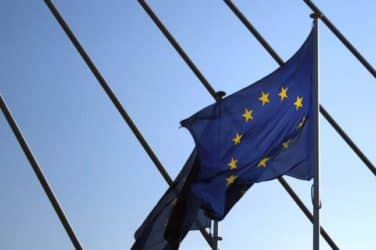
Regulators face an uphill battle trying to crack down on the perceived ills of high-frequency trading, with some market participants in Europe confident that the markets will always stay one step ahead.
In Europe, politicians and regulators are still trying to work out ways in which to clamp down on the practice that has been blamed for creating volatility and damaging the integrity of markets. It seems a proposed financial transaction tax on trading may yet be introduced by the European Union after all, despite much lobbying by the industry against such a move. The European parliament’s Economic and Monetary Affairs Committee approved a resolution on Wednesday which proposes a better design for the financial transaction tax in order to capture more traders and to make evading it unprofitable. However, there is still likely to be major opposition to such a move from EU nations such as the UK, Netherlands and Sweden.
And some EU lawmakers want to introduce a minimum ‘resting’ period for orders on a trading platform, to make it more likely to find a buyer, and a minimum ratio of orders to actual completed transactions—two moves which some experts believe would kill off large chunks of the HFT market.
“One of the first challenges is that without a universal definition of what high-frequency trading is it is almost pointless to regulate it,” Steve Grob, director of group strategy at Fidessa in London, a trading and technology company, told Markets Media at WBR’s Trade Tech Europe 2012 industry event in London this week.
“And people can innovate faster than regulators can pass laws. So the minute regulators get into that game they are just going to play catch-up.”
High-frequency traders have been criticized for ‘quote stuffing’, when algorithms flood the market with orders only for them to be canceled fractions of a second later. This practice was blamed on the ‘Flash Crash’ in the U.S. equity market in May 2010, when the Dow Jones Industrial Average plunged almost 1,000 points, only to recover its losses within minutes.
But Tanuja Randery, chief executive of London-based MarketPrizm, a trading technology company, says that high-frequency trading has always existed in one form or another and that Europe’s focus on trying to crack down on HFT is somewhat missing the point.
“High-frequency trading is a strategy used by almost all players and to oscillate this thing called HFT and say it is causing all these issues is ignorant in some ways,” she told Markets Media at Trade Tech.
“They do a lot of good; on the one hand, bringing liquidity to markets but I think there is also something to be said that when they are in markets they do drag liquidity out too. If they don’t go in though, there’s going to be nothing to some extent. My personal thinking is that there is too much focus on high-frequency trading as the cause when I actually think it is being practiced in every market of every kind since aeons in just different ways.”
However, Jon Payne, manager of sales engineering at technology vendor InterSystems in London, believes that regulations will have a profound effect on high-frequency trading strategies going forward.
“I think we are entering a different world that is going to make the value of HFT less because the regulatory impediments, or requirements, that markets are going to be operating under are really moving away from the very smooth and transparent markets into ones which are much more regulated and satisfying the requirements of these regulations becomes much more important,” he told Markets Media at Trade Tech. “The fact that you can execute a few microseconds faster than the other guy—there is going to be less value in that than a few years ago.”






